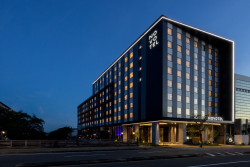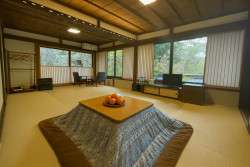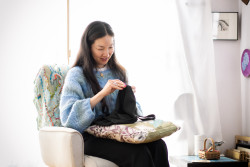
Originally published on metropolis.co.jp on May 2012

It’s tough to be a sixth-grader in a disaster-stuck town like Minamisoma. Not just because they are dealing with grief and the ongoing danger of radiation exposure, but also because children at that age still want to play and be carefree. On the cusp of adulthood, they are also old enough to worry about the future of their community and whether they can play a role in rebuilding it.
“I think the kids are really strong,” says Nadia Lombardo, organizer of a recent event to help children from Minamisoma realize their potential to heal and to contribute through art. “It shouldn’t be all about victimization. They want to be active; responsible for their own place.”

As a representative of EastEdge Resorts—a hospitality brand that promotes several hotels and ryokan in Nagano and champions slow food, community-building and cultural experiences—Lombardo invited sixth graders to stay at their Azumaya Resort near Karuizawa as a graduation present.
The weekend event was realized through collaboration with the Save Minamisoma Project, which arranges bi-weekly deliveries of fresh vegetables and safe drinking water to Minamisoma, and the Tokyo-based art space Traumaris. Held March 31-April 1, it included the usual tourist activities like playing in the snow and visiting the hot springs, plus performances by a magician and live painter Julie Blanchin. According to Lombardo, since they have to ration their outdoor playtime at home, just the freedom to stay outside as long as they wanted was exciting for the 39 participants and their parents.
The main events, though, were the workshops. In one, the children constructed a “rocket stove” with sculpture artist Hitoshi Nishiyama. The stoves are constructed out of common, readily available materials like cinderblocks and metal cans and can cook food, bake bread or be used for heating. Once completed, kids had the option of bringing the ovens home or donating them to shelters in Tohoku.
In the “Life Stripe Workshop,” kids created an artwork of colorful stripes meant to represent one day in their life, using different colors to represent a variety of activities, like studying, hanging out, exercising or using digital media. “It’s a tool to see into other people’s lives,” says Lombardo. By comparing their work to others, they can see similarities and differences and it opens up an avenue of communication.
After finishing, the children were given the choice of taking their artwork home or allowing it to be exhibited to raise money for the Save Minamisoma Project. Every child agreed to have their works displayed. Some pieces were already included in a Life Stripe exhibition in Milan, and the complete set will soon be on display in Tokyo.
Lombardo says the universal participation is a sign that the kids have understood the message they wanted to convey: that they can be active and creative members of the community. “We wanted the children to experience life through art. We wanted to use art as an educational tool. They can create, they can change, or even just make life more beautiful with their creativity and imagination.”
Jun 12-17, 11am-8pm, free. Spiral Garden, Spiral Bldg, Minami Aoyama 5-6-23, Minato-ku. Nearest stn: Omotesando. www.spiral.co.jp.







